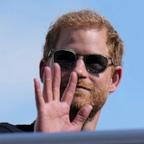Excerpt: 'Hope for Animals and Their World' by Jane Goodall
Goodall raises awareness about animals in peril and the state of our planet.
Sept. 4, 2009— -- In her new book, "Hope for Animals and Their World," Jane Goodall writes about how she came to devote her life to animals and the natural world, and what does to raise awareness about the state of our planet.
For more information about Jane Goodall, visit The Jane Goodall Institute.
I am writing this from my home in Bournemouth, England. I grew up in this house, and as I look out my window I can see the very same trees I climbed as a child. Up high in those trees I believed I was closer to the birds and the sky, more a part of nature. Even as a very young child, I felt most alive in the natural world, and almost every book I read -- borrowed from the local library -- was about animals and adventures in wild untamed places in the world. I began with the stories about Doctor Dolittle, that English doctor who was taught animal languages by his parrot. Then I discovered the books about Tarzan of the Apes. Those two books inspired a seemingly impossible dream -- I would go to Africa one day and live with animals and write books about them.
Perhaps the volume that influenced me most was called The Miracle of Life. I spent hours poring over the small print of those magical pages. It was not a book written for children, but I was absolutely absorbed as I learned about the diversity of life on earth, the age of the dinosaurs, evolution and Charles Darwin, the early explorers and naturalists -- and the amazing variety and adaptations of the animals around the world. And so, as I grew older and learned more and more, my love of animals broadened from my hamster, slow worm, guinea pigs, cats, and dogs, to a fascination for all the amazing animals I read about in those books.
There was no television when I was young: I learned everything from books -- and nature. My childhood dream was realized when I was invited to Kenya by a school friend. I set off when I was twenty-six years old, after working asa waitress to save the fare. I went by boat because it was cheapest, calling in at places I had read about such as Cape Town and Durban, and finally arriving in Mombasa. For me it was especially exciting to arrive at the Canary Islands -- for Doctor Dolittle had been there, too! What adventure, back then, for a young woman traveling alone. Once I reached Kenya, my love of animals led me to Louis Leakey, who eventually entrusted me with the task of uncovering the secrets of the behavior of the animal most like us. (Quite extraordinary when you consider I had no degree and back then girls did not do that sort of thing!) That study of chimpanzees, in Tanzania's Gombe National Park, has lasted for half a century and helped us understand, among other things, more about our own evolutionary history.
It has taught us that the similarities in biology and behavior between chimpanzees and humans are far greater than anyone had supposed. We are not, after all, the only beings with personalities, rational thought, and emotions. There is no sharp line dividing us from the chimpanzees and the other apes, and the differences that obviously exist are of degree, not of kind. This understanding gives us new respect not only for chimpanzees, but also for all the other amazing animals with whom we share this planet. For we humans are a part of, and not separate from, the animal kingdom. We are still studying the chimpanzees of Gombe, and I might well have stayed there, with the animals and forests I love, if I had not attended a conference called Understanding Chimpanzees.




